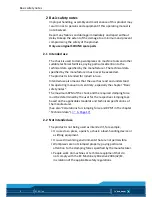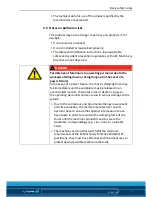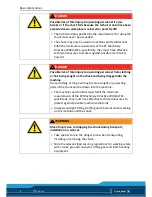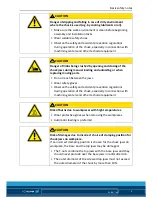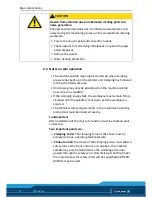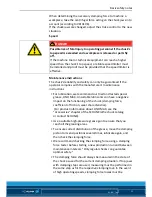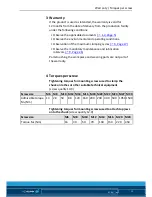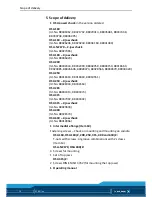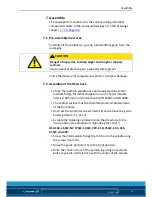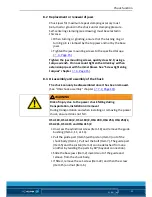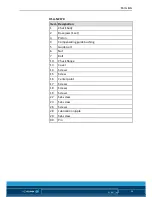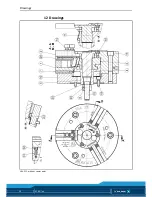
Assembly
20
01.00| |en
• Screw the power chuck onto the draw tube as far as it will go.
(Make sure that the draw tube thread is flush.)
The HSA 160,160/2, HSA-NZ 170/2,180/2, HSA 250, HSA 250/2
and HSA 400 is screwed onto the draw bar using the screw
(Item 15). (The screw must also be flush with the draw bar
thread.
• The chuck is screwed onto the intermediate flange (spindle)
using the screws (Item 17).
The run-out can be aligned as follows: Slightly loosen the
screws (Item 17). Fit a dial gauge on the cylindrical surface of
the chuck body (Item 1). Align the run-out using the set-screws
(Item 23). Tighten the screws (Item 17) alternately.
HSA 630/2:
• Lift the chuck with the flange screwed on (Item 10) in front of
the spindle lug using an eye bolt until it is flush with the center
of the spindle. The bore holes for the screws (Item 17) should
be flush with the threaded holes in the spindle.
• Screw onto the draw bar using the screw (Item 15). (The screw
(Item 17) must also be flush with the draw rod thread.)
• Slightly tighten the screws (Item 17) alternately. Also slightly
tighten the screws (Item 19).
• The run-out can be aligned as follows: Place a dial gauge on
the cylindrical surface of the chuck body (Item 1). Adjust the
set-screws (Item 23) to align the run-out. Securely tighten
the screws (Item 17 and 19) alternately.
Tighten the fastening screws, quality class 10.9, using a torque
wrench.
(See "Screw tightening torques" chapter
(
4, Page 15)
).
On no account tighten the Allen key with an extension pipe or
with hammer blows.
All HSA chuck types:
• Fit the guide bushing for the compensating clamping (Item 4)
or self-centering clamping (Item 13) using the screws (Item 18).

